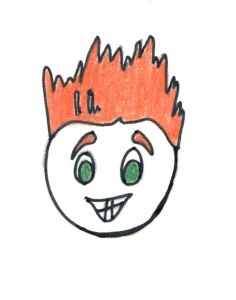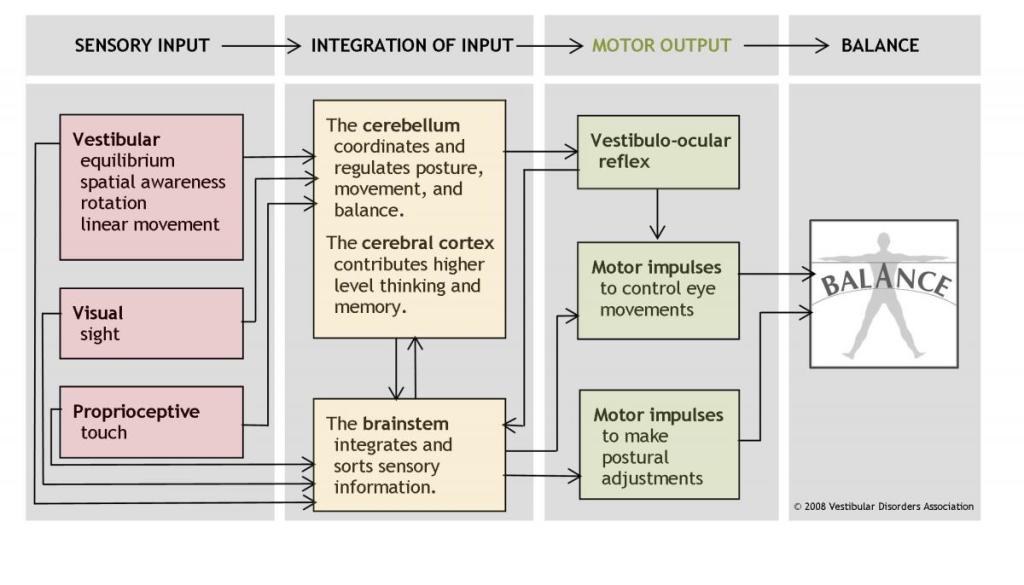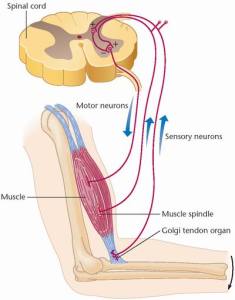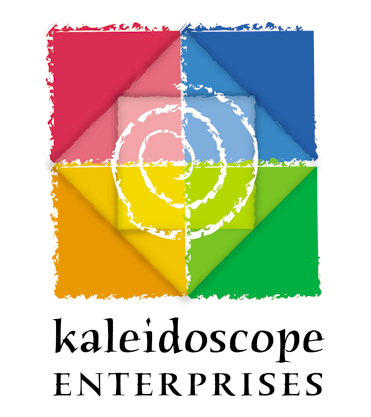Hey, Larry & Gary: Space & Movement Twins
“Hi there! I’m Larry and this is my twin brother, Gary, and we help you with everything space & movement!” Larry exclaims, “We’re here to help you with your coordination, balance, and movement so you can do things like swing on swings, ride on a roller coasters, balance on one foot, and twirl around. We also help you….”
“Well, gee, Larry, I want to say something!” Gary says, “Let me talk too. Hi there! How are you?”
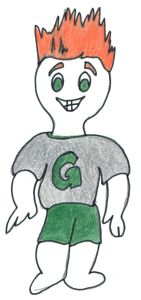 “They cannot answer you Gary. They are reading what we are saying. We are not having a conversation. Jeez.” Larry says, with a big dramatic eye roll.
“They cannot answer you Gary. They are reading what we are saying. We are not having a conversation. Jeez.” Larry says, with a big dramatic eye roll.
“Okay, but I still want to say something,” Gary starts.
“Well, go ahead, I am not stopping you,” Larry interrupts.
“You just did, BUT I am going to ignore you for now. Hi there again,” Gary continues, “We help you know where you are in space so you don’t crash into everything and we help you know your body image and scheme.”
“Ya, ya, ya, but Gary, they want to know about us too. We can tell them about Max, our new puppy, and how cool he is even though Mom is really mad because he chews EVERYTHING! And we can tell them how we LOVE to play flashlight tag with George and about oh, I know, I’m teaching Max a new trick…”
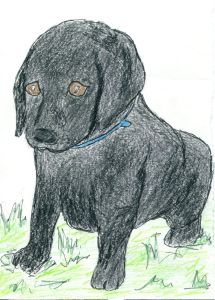 “Larry, can I tell them about how I am not that thrilled to play flashlight tag EVERY single night? And, sometimes, your magic tricks and practical jokes are annoying and….”
“Larry, can I tell them about how I am not that thrilled to play flashlight tag EVERY single night? And, sometimes, your magic tricks and practical jokes are annoying and….”
“Wait a minute! You don’t totally LOVE flashlight tag? Since when?”
“Well, after about the 100th time we played it!”
“Seriously?”
“Yes, but I want to talk about the new drum set I just got and about my new painting set.”
“You play the drums ALL of the time and you always have paints all over you! Maybe if you played on our jungle gym or in our tree house more, you wouldn’t have paints all over you.”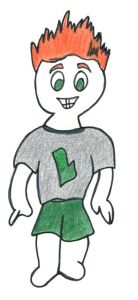
“What are you taking about? I am always outside playing with you. I even set up that huge scavenger hunt for you, George & Henry the other day, ” Gary grumbles.
“Look, how about if we call a truce and go play our instruments? I’ll play my guitar while you play drums.”
“Okay, that sounds great,” Gary answers as he turns away to go into his house.
“So, bye for now! Thanks for hearing our story. We usually get along better than this, but we are just so excited about our new puppy Max and Gary’s new drum set. We are having so much fun!” Larry also turns to go into his house and yells, “Hey, Gary, do you want to call George to see if he wants to come over and play too?”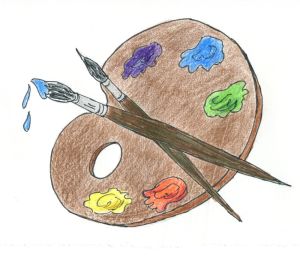
Space & Movement in Laymen’s Terms
There are two systems involved in this area, vestibular and proprioceptive.
Vestibular:
Our vestibular system is all about balance and movement. It lets us know:
- When WE are moving or standing still
- When objects are moving or standing still around us
- What direction we are going in
- How fast we are going
We have receptors in our inner ears that sense our movement, our head position and gravitational pull.
It is said that our vestibular system is the ‘starter’ for our entire nervous system and when everything is working properly, the nervous system starts right up without issue. When there is a problem, however, the entire nervous system seems to work inconsistently and inaccurately.
When our vestibular system is working properly, it helps keep us safe. It tells us when we are falling, so we can put our hands out to keep our heads from crashing onto the floor. It also helps us discriminate different types of movement, such as; rocking or swinging and allows us to keep our balance when in movement.
When the vestibular system is out of balance in a child, the child will avoid movement, be insecure about gravity, or seek lots of movement.
If a child avoids movement, it is because he or she cannot handle the sensation of moving. All movement feels uncomfortable as it seems to be too much or too fast. The child can become easily dizzy or nauseated, so avoids most types of movement.
If a child is insecure about gravity, the child is actually scared about falling. This child does not have a sense of stability in relation to the earth and actually fears falling and even the possibility of falling.
If a child seeks movement, the child wants all kinds of movement. He or she may climb everything, spin constantly, or run fast when walking would be more appropriate. This child is looking for movement to satisfy a need or get into gear.
The vestibular system is also responsible for our overall and bilateral coordination. When our vestibular system is working properly, we can coordinate our movements, stabilize our bodies and balance properly. We can also get both sides of our bodies to work together to accomplish a task such as; using both feet to jump, putting our hands together to hold or catch something, or using one hand to draw and the other to hold the paper in place.
When a child’s vestibular system is not working properly, the child’s overall and bilateral coordination may be compromised.
When a child’s overall coordination is compromised, the child appears unstable, may fall and crash into things quite frequently. The child looks clumsy and movements are uncoordinated.
When a child’s bilateral coordination is not in sync, the child will not want to cross the midline. Literally, a child will not cross hands or feet from one side of the body to the other. The left hand will not scratch the right foot, the right foot will not perch onto the left knee, etc.
The vestibular system requires input from our proprioceptive system, so both of these systems need to be working properly in order to achieve balance and movement.
Proprioceptive:
Our proprioceptive system could be termed our “position sense” as this sensory system tells us about our own body position and movement, in other words, it tells us where we are in space and how we are moving. The receptors for our proprioceptive sense are in our muscles, joints, ligaments, tendons and connective tissue. These receptors help us integrate touch and movement sensations, without using our eyes, so this sense is the unconscious sense of body position and movement.
Proprioception helps us with body expression and helps our bodies to move efficiently and effectively. More specifically, this sense helps us with our body awareness, body position, grading of movement and postural stability.
The proprioceptive system is aligned with the tactile and vestibular systems, so if a child has an issue with proprioception, he or she will likely also have an issue with the tactile system, vestibular or both.
If a child has proprioceptive issues, she has issues with body awareness. She needs to use her eyes to track her body’s movement, as she is unaware of her body’s position. Her muscles, joints, etc. are not sending messages to her brain about her motions, therefore, she has to see it to feel it.
This may also be demonstrated as a lack of awareness of body image and scheme. When asked to draw herself, she may not be able illustrate her body appropriately.
She may also exhibit issues with the ability to grade her movements. She may not be able to tell the difference between a heavy object and a light one. She may not calibrate the necessary amount of pressure to exert in her muscles, so spends the same amount of muscle pressure to hold a pencil as she does to lift a heavy weight.
A child with proprioceptive issues may not have postural stability, as he may not be able to stabilize his body when sitting, standing or moving.
Both the proprioceptive and vestibular systems are involved with muscle tone. If both systems are working properly, our muscle tone is appropriate, meaning our muscles have a certain amount of tension at all times, even in a resting state. When our proprioceptive system is working properly, our muscle tone is just right, so we don’t have to work to keep ourselves upright.
When a child’s muscle tone is low due to a proprioceptive system that is not working properly, the child has trouble holding himself upright. His muscles are not weak, but they are not at the state of readiness, so his body appears floppy or loose. It takes effort to resist the gravitational pull, so he may rest his head on his hands, slouch in a chair or lay on the floor instead of sitting up. His hands may also show weakness, not allowing him to easily twist open a bottle cap or to turn a doorknob to open a door.
Again, proprioception is unconscious, so this system should be working in the background with us completely unaware of all that is does for us. If it is not working properly, we need to make a conscious effort to be aware of what is should be doing for us.
Some ‘Sciency-Stuff’
As we discussed the 3 main parts of the nervous system with Henry, the Sensory Guy, we will not repeat everything here. We will note those areas involved with vestibular and proprioceptive processing. With each of these systems, the origin of stimuli involves the peripheral nervous system, however, we will discuss the central nervous system first as it is integral to both systems.
- Central nervous system that involves neurons, spinal cord and brain.
- Peripheral nervous system located in our organs and muscles such as the eyes, ears and limbs
The Central Nervous System is largely responsible for sensory and motor processing once the signals are received from the peripheral nervous system. The Central Nervous System is comprised of three parts:
- Neurons – tell us what is happening inside and outside of our body. Sensory and motor neurons connect the brain and spinal cord to the rest of our body. The sensory ones receive signals from our eyes, ears, skin, muscles, joints & organs. Once a signal is received by the neuron, it communicates messages to other neurons through contact points called synapses. These synapses are divided into two types: presynaptic and postsynaptic. The presynaptic neuron is the one that fires off the signal and the postsynaptic is the one that receives it. These firing signals may either activate the receptors of the receiving neuron that is known as excitatory or facilitatory. They may not activate the receiving neuron that is known as inhibitory. Modulation is the process that balances these facilitatory and inhibitory messages.
The speed at which neurons connect is directly related to a substance called myelin that coats part of the neuron to protect it. The more a neuron is used to process signals, the stronger the myelin gets, which in turn, speeds up these connections.
- Spinal Cord – receives all signals from our peripheral nerves in our skin and muscles and sends them to the brain, once the brain interprets the sensory messages and sends motor signals back to the spinal cord, which sends messages back to the peripheral nerves
- Brain – we will use the simpler triune brain:
The brain stem involves four parts:
a) Crossroads – receives sensory messages from skin & muscles in the head & neck and sends information to the cerebrum. The cerebrum sends messages for motor coordination.
b) Switching gate – sensations from the left side of the body cross over the right cerebral hemisphere of the brain and vice versa
c) Clearing House – vestibular sensations processing for, in this case, maintaining balance, seeing moving objects and focusing our attention
d) Regulator – processes our automatic nervous system and communicates with our vestibular system
Cerebellum – processes proprioceptive and vestibular sensations, coordinating muscle tone, balance and body movements
Diencephalon – part of the limbic system and involves the following areas:
a) Basil Ganglia – clusters of nerves that relay messages among the inner ear, cerebellum and cerebrum coordinating vestibular sensations for balance and movement
b) Thalamus – processes all sensory information, expect smell, to the cerebrum
Cerebrum – two hemispheres & a connective middle:
c) Left – cognitive side that directs analytical, logical and verbal tasks & the right side of our body
d) Right – sensory & intuitive side – directs nonverbal activities & the left side of our body
e) Corpus callosum- connects the two hemispheres
Each hemisphere has cortical lobes that must work together in order to work properly:
a) Occipital Lobes – vision
b) Parietal Lobes – body sense, process proprioceptive messages
c) Temporal Lobes – refining vestibular sensations
d) Frontal Lobes – motor area for organizing voluntary body movement
Lying on top of these lobes are the sensory and motor cortexes.
Sensory cortex – receives proprioceptive sensations, among others
Motor cortex – sends messages through peripheral nerves to muscles
The peripheral nervous system is comprised of sensory neurons that send information to the central nervous system and motor neurons that carry information from the central nervous system to organs, muscles & glands.
Vestibular:
The vestibular system is extremely complex, involving the inner ear, muscular structure and eyes for sensory input, the central nervous system for processing, and motor neurons that carry information, known as motor output, that drive the reflexes and muscles for output of balance and movement.
A simple overview is provided by the Vestibular Disorders Association.
Proprioceptive:
The proprioceptive system initiates in the peripheral nervous system where there are proprioceptors and proprioreceptors.
- Proprioceptors located throughout the body in the skin and muscles to monitor length, tension, pressure and stimuli
- Proprioreceptors or sensory neurons located in the inner ear and stretch receptors located in the muscles & joint
These proprioceptors and receptors are responsible for unconscious body position and movement, letting us know exactly where we are in space and how we are moving, even with our eyes closed.
The types of proprioceptors involve:
- Muscle spindle cells – located in the muscles – measure changes in angle & position of muscles; ones in arms & legs – maintain posture against gravity
- Golgi tendon organ – located where tendons meet the muscle – signal tension in specific parts of the muscle
- Stretch receptors in the joints & ligaments – sending information to central nervous system
The muscle spindle cells constantly send messages to the central nervous system, even when the muscles are at a state of rest. When the message is received, the brain sends messages back out to the body to produce an action. This is known as motor output. When the muscles receive these involuntary signals, the proprioceptors control the response of the muscles, which in turn stabilize, hold, control or limit the movements of the bones and joints.
The proprioceptive sense is comprised of the sensory neurons located in the inner ear for motion and orientation and the stretch receptors in the muscle and joints involving stance.
The vestibular and proprioceptive systems are vey complex and are intertwined together and with the tactile, auditory and ocular senses.

